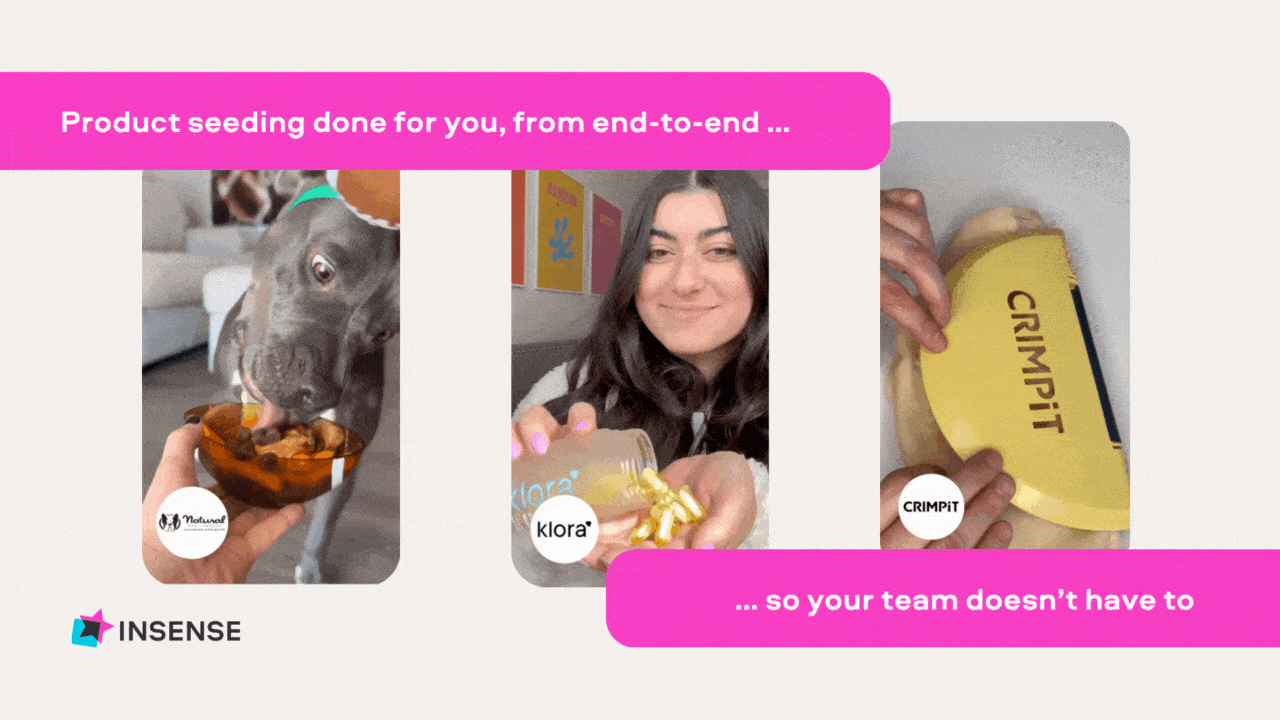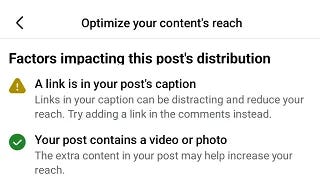Offer Mechanics vs. Discounting
🎯The Secret Science of High-Performance DTC Offers, Meta & YouTube Prioritizing In-App Engagement, and more!
Howdy Readers 🥰
In this newsletter, you’ll find:
🎯The Secret Science of High-Performance DTC Offers
📊 Meta & YouTube Prioritizing In-App Engagement
🚀 Quick Hits
If you’re new to Buyology, then a hearty welcome to you. You’ve reached the right place alongside 50k+ amazing people. Before you forget, if someone forwarded this newsletter to you, don't forget to subscribe to our newsletter so you never miss out!
Together with Insense
Let Insense run seeding campaigns for you - your team is maxxed.
If you're doing $1M+ and still juggling creator outreach, product shipment logistics, and UGC follow-ups… why?
Product seeding campaigns that run themselves?
That’s how 2000+ brands like Victoria Beckham Beauty, Bones Coffee, Flo Health, and UCA Lingerie scale UGC without killing team bandwidth.
Insense handles:
End-to-end creator sourcing and creator comms
Product shipment at scale
Creative strategy + briefing + UGC delivery
You get licensed content from creators who actually follow the brief, and it’s all done for you.
💸 Get up to 20% off managed services - offer ends June 20.
Book your free strategy call now!
🎯 Offer Mechanics vs. Discounting: The Secret Science of High-Performance DTC Offers
Most brands default to discounting because it’s easy, visible, and “works.” But seasoned operators know that flat discounts have a ceiling; they train customers to wait, kill perceived value, and create margin stress long-term.
What really scales is offering Buy mechanics, layered, dynamic, behavior-based structures that drive higher AOV and faster decision cycles.
Let’s break down how elite brand engineers offer logic that multiplies conversion without eroding brand equity.
1. Tiered Thresholds > Blanket Discounts
Instead of “20% off sitewide,” offer mechanics use thresholds:
“Get a free gift when you spend $30 / $50 / $75.”
“Buy 2, get 10% Buy 3+, get 20%.”
This laddered approach doesn’t just raise cart value, it drives deliberate decision-making. Customers upgrade themselves because the next tier feels strategically smarter.
Document these logic rules for your CX or paid media team visually using Guidde. Capture your offer playbooks, step-by-step, in 60 seconds.
2. Mystery Offers Activate the Curiosity Bias
“Get a surprise item worth ₹500+” outperforms flat discounts in most verticals because humans are wired to assign more value to the unknown. The best DTC brands:
Reveal the mystery item post-purchase (delight and retention).
Or show a randomized gift spinner after the customer hits a threshold.
You’re turning a transaction into a game, and games convert.
3. Landing Page Mechanics Must Mirror Ad Psychology
The biggest killer of offer performance? Disconnect. You hook with urgency or scarcity in the ad, but land users on a bland, price-led PDP. Top brands:
Build offer-specific LPs that mirror the psychological frame (curiosity, exclusivity, threshold logic).
Use visual offer breakdowns, not just coupon fields.
Ad → LP offer congruence is what turns clicks into carts.
4. Smart Offers are Modular, Not Seasonal
Discounts expire. Offer mechanics compound. The best part? You can rotate the same structure endlessly:
Tiered spend → re-skinned with seasonal gifts.
Bundles → refreshed with new hero SKUs or creator-led packs.
Mystery → repackaged for loyalty tiers or early access drops.
Once the mechanic is built, scaling it is a branding exercise, not a tech one.
Why it matters:
Founders and CMOs who understand offer mechanics aren’t just reacting to sales dips; they’re engineering behavioral momentum. Mechanics scale with your brand; discounts don’t.
The more repeatable and creative your offer structure, the more margin you unlock without discount dependency. You can install the Guidde extension here and build your offer library now.
📊 Meta & YouTube Now Prioritize In-App Engagement
Meta and YouTube are quietly shifting strategy, punishing outbound links and rewarding creators who maximize session depth on-platform.
🔗 Meta nudges links to the first comment: Facebook Page insights now suggest placing links in comments, not post text. Even if you delete the URL after loading a preview, it still counts as a link post. Posts with native images and first-comment links are seeing higher reach.
📉 Link posts keep losing visibility: Meta’s latest report shows 97.3% of US post views go to non-link updates. Algorithm signals suggest native formats, especially video, are more favored than external links. Social managers can’t schedule first comments, but it may be worth the manual lift.
📺 YouTube unlocks “follow-on views” optimization: Demand Gen campaigns can now optimize for viewers likely to watch more videos. You can set this as a Primary or Secondary action in Conversions Summary. Ideal for growing engagement loops, not just one-off views.
⚙️ Small setup, big strategy shift: Link your YouTube and Ads accounts, enable the new goal, and track view depth. This makes campaigns more about channel loyalty than just discovery. It also gives creators another layer of audience targeting beyond subs or CTR.
Why it matters: The era of CTR obsession is fading. Meta and YouTube now reward creators who hold attention, not just grab it, making session depth the new gold standard for growth.
🗝️ Tweet of the Day
Advertise with Us
Wanna put out your message in front of over 50,000 best marketers and decision makers?
Checkout our Partner Kit here🤝
At Buyology, we care about our readers and want to provide the best possible experience. That's why we always look for ways to improve our content and connect with our audience. It would be amazing if you could hit us up with feedback about our content or absolutely anything, we are always up for a chat 🥰
Thanks for your support, We'll be back with more such content 🥳



